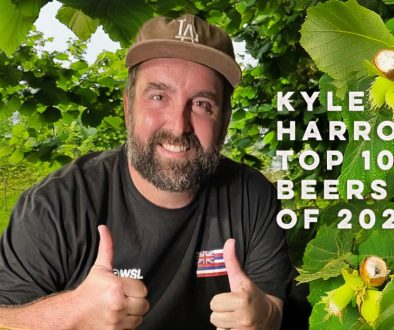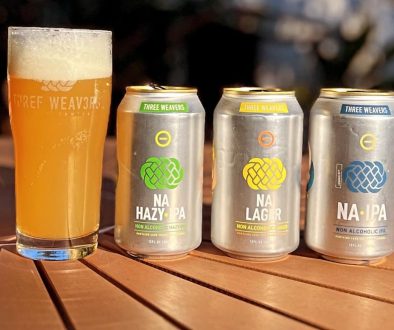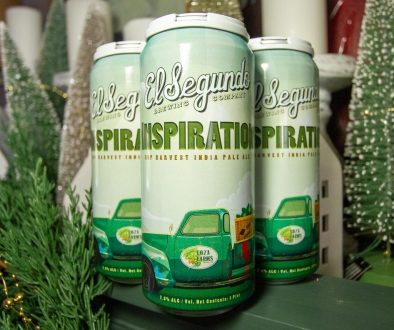Why New England Style IPAs Will Continue to Dominate in 2018

Love them or despise them, you must admit that New England style IPAs (NEIPAs for short) have been the major topic of discussion among the craft beer community over the last year. This sub-style features massive doses of hops late in the brewing process resulting in a beer with pungent aroma and big hop flavor but minimal bitterness and a distinct appearance that ranges from hazy to murky. Many of the most sought-after beers in the Northeast fall into the NEIPA style. Entire breweries have been built on the popularity of turbid, juicy IPAs. Any time something comes along that is new and an immediate sensation there will be an inevitable backlash, and that was the case with NEIPA in 2017. A number of influential brewers and beer writers spoke out against the style, bemoaning their short shelf lives, the fact that some examples were poor quality and calling the whole substyle a fad that would disappear quickly. I completely disagree with this. New England style IPAs are not only going to continue to be a major movement in craft beer in 2018, they are going to be even bigger than last year. Here are some reasons why:
NEIPAs aren’t just a fad. A popular refrain amongst the brewers and writers that dislike NEIPA (and are often outspoken about their views on social media) is that it’s just a fad primed for a quick fall. They tend to compare it to black IPAs or pumpkin beers, two styles that were all the rage for a short period of time but have declined in popularity since. This is a flawed argument. Black IPAs were always a niche style and, even at the height of their fame, very few beers of this style were considered amongst the best beers in the world. Pumpkin beers are still somewhat popular in the fall. A few breweries had incredible success with the style which led many to follow the trend. This led to an over-saturation of the market, which has corrected in recent years. NEIPAs are completely different. Many incredibly successful breweries were built almost entirely around this style, and some versions are rated amongst the best beers in the world on crowd-sourced websites and by professional beer writers. There are obviously bad versions of NEIPA, but there are bad versions of every beer style. It’s futile to argue that these bad beers are somehow a mark against the versions that are well crafted and delicious.
READ: WHY BREWERS AND DRINKERS HATE ON HAZY IPA
NEIPA is a distinct style. This isn’t necessarily a reason why NEIPA will continue to grow, but it is an important clarification. New England IPA hasn’t been recognized as an official style or substyle in any beer style guide (as far as I can tell), but it is clearly much different than the previous iterations of IPA. Traditional British IPAs have more hop character than most old world styles, but wouldn’t be considered hop forward by current standards. West Coast IPAs have a ton of hop flavor and aroma, but the piney hops and aggressive bitterness are substantially different than the soft and fruity NEIPAs. The fact that NEIPA is a completely unique style means it attracts different drinkers, and most people I know who love NEIPAs are loyal to the substyle.
There is plenty of room to experiment within the style: NEIPAs are hoppy beers, so most of the experimentation comes from using different hop regimens. Brewers have access to a huge number of hop varieties and combinations, with more new and experimental hops coming onto the market each year. There is also space for creativity in the malt bill, where wheat can accentuate the hop flavors, oats can add to the creamy mouthfeel and rye can add some subtle spice. Some of the most interesting versions of the style also use adjuncts, from fruit juice to lactose, which complement the sweet and fruity notes from the hops. This level of experimentation leads to a wider variety of beers that fall into the NEIPA umbrella, perfect for promiscuous drinkers who always need to try something new.
NEIPAs are accessible, even to people who wouldn’t normally identify as craft beer drinkers. I have a friend who drinks more Coors Light than any other beer and he raves about Green from Tree House Brewing Company. He is far from a beer snob, but has gone out of his way on multiple occasions to acquire this beer. While he isn’t a big fan of bitter IPAs he loves how flavorful and easy to drink Green is. This is an important point that isn’t brought up enough, NEIPA can appeal to casual drinkers as well as long standing beer geeks. I don’t mean to say that every Bud and Coors lifer is going to drop their 30 racks to wait in line at obscure beer releases, but I think the substyle in accessible enough help convert some macro drinkers onto more flavorful beer.
Bigger craft brewers are hopping on the bandwagon. The majority of popular NEIPAs are produced by small breweries and sold directly to consumers within days of canning. That is changing this year. Sierra Nevada and Sam Adams, two of the biggest craft breweries in the US have each put out a hazy IPA in the last few months and many other medium to large craft outfits are following suit. I would be shocked if one of the labels in the AB-InBev line doesn’t jump into the fray as the first macro NEIPA. These new beers, backed by widespread distribution, will make the NEIPA style available to the masses who pick up six packs at the grocery store instead of waiting in lines at small breweries on can release days. It will be interesting to see what the quality of these new beers are, especially with the notoriously short shelf life attributed to the style, but at the very least they should be a nice introduction for people who still associate IPA with aggressive bitterness.
When made correctly NEIPAs are delicious. There is a reason that the most highly respected NEIPAs are ranked as some of the best beers in the world. When the style is done right the beers are incredible, easily the best way to coax maximum flavor and aroma out of popular new varieties of hops. There is nothing like the first whiff of pungent and fruity hoppiness from a fresh can, followed by the complementary bold flavors and easy drinkability. I avoid waiting in line for any beer, but the few that I would consider waiting for are mostly hop-bomb NEIPAs. I saved this point for last, but this is the number one reason that NEIPAs will continue to be popular going forward, as more talented brewers experiment with the style consumers will end up with a plethora of delicious and readily available beers to satisfy any hop-head. I am ready and looking forward to tasting what these talented brewers come up with next. Cheers to another year of hazy and juicy NEIPA!
Ryan Brawn is a beer geek, writer, chemist and occasional home-brewer who lives in the suburbs of Boston. He is the author of HoppyBoston.com, a blog featuring news, notes, reviews and opinions with a focus on the New England beer scene. You can follow Hoppy Boston on Twitter (@HoppyBoston), Instagram (HoppyBoston) or Facebook (facebook.com/hoppyboston).




May 13, 2018 @ 6:52 am
Fairly certain blue point has had a hazy ipa out for several months, ie. Your in bev offering
February 2, 2018 @ 5:13 pm
“I think the substyle in accessible enough help convert some macro drinkers onto more flavorful beer.”(sic)
If this is the case, it seems odd that the emergence of the style coincides with growth in the craft beer segment falling off a cliff.